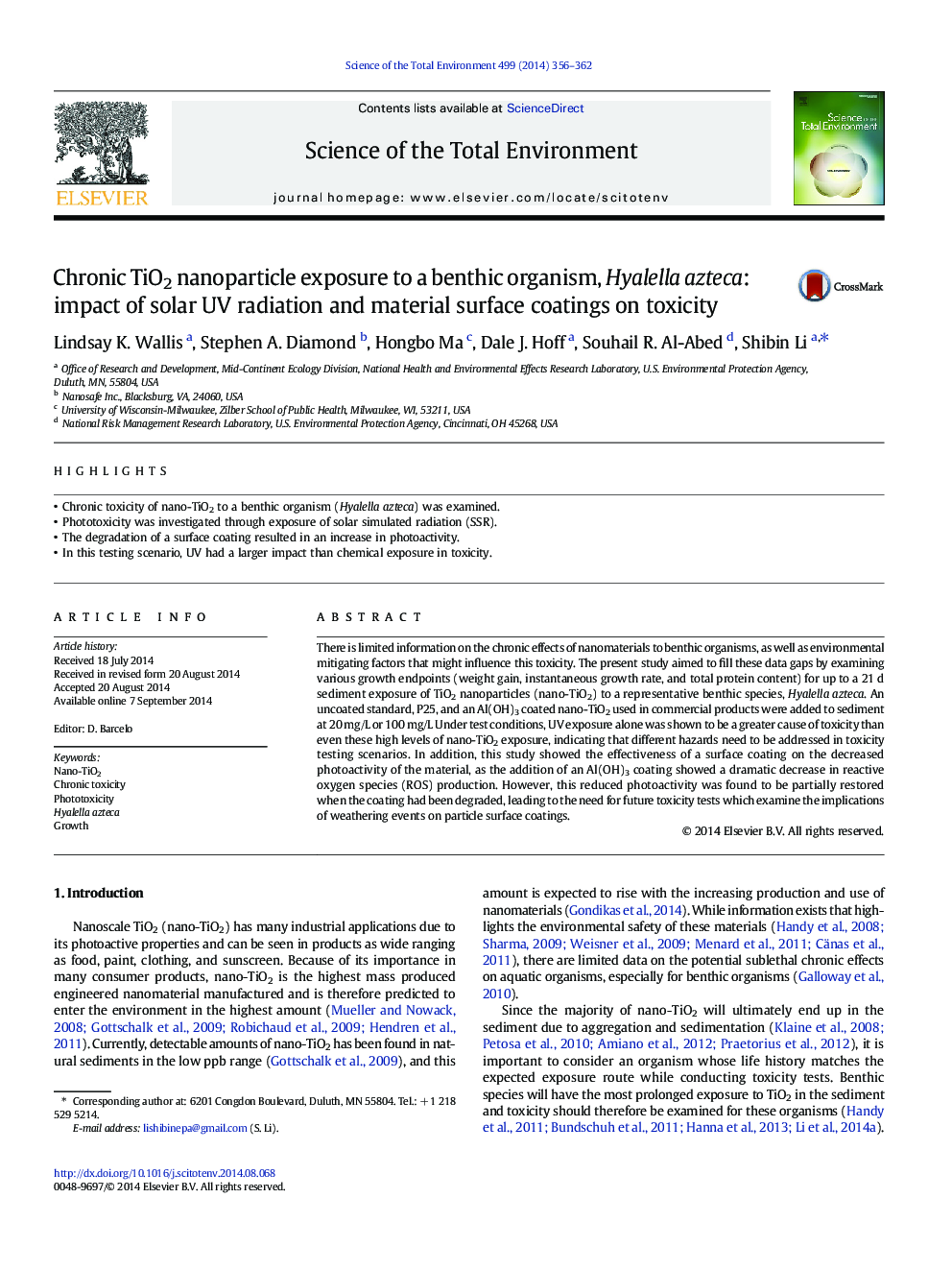| Article ID | Journal | Published Year | Pages | File Type |
|---|---|---|---|---|
| 6328935 | Science of The Total Environment | 2014 | 7 Pages |
Abstract
There is limited information on the chronic effects of nanomaterials to benthic organisms, as well as environmental mitigating factors that might influence this toxicity. The present study aimed to fill these data gaps by examining various growth endpoints (weight gain, instantaneous growth rate, and total protein content) for up to a 21 d sediment exposure of TiO2 nanoparticles (nano-TiO2) to a representative benthic species, Hyalella azteca. An uncoated standard, P25, and an Al(OH)3 coated nano-TiO2 used in commercial products were added to sediment at 20Â mg/L or 100Â mg/L Under test conditions, UV exposure alone was shown to be a greater cause of toxicity than even these high levels of nano-TiO2 exposure, indicating that different hazards need to be addressed in toxicity testing scenarios. In addition, this study showed the effectiveness of a surface coating on the decreased photoactivity of the material, as the addition of an Al(OH)3 coating showed a dramatic decrease in reactive oxygen species (ROS) production. However, this reduced photoactivity was found to be partially restored when the coating had been degraded, leading to the need for future toxicity tests which examine the implications of weathering events on particle surface coatings.
Related Topics
Life Sciences
Environmental Science
Environmental Chemistry
Authors
Lindsay K. Wallis, Stephen A. Diamond, Hongbo Ma, Dale J. Hoff, Souhail R. Al-Abed, Shibin Li,
